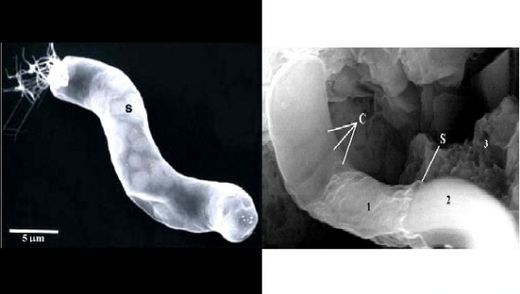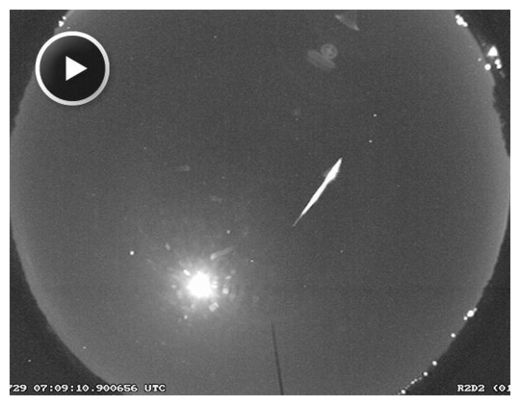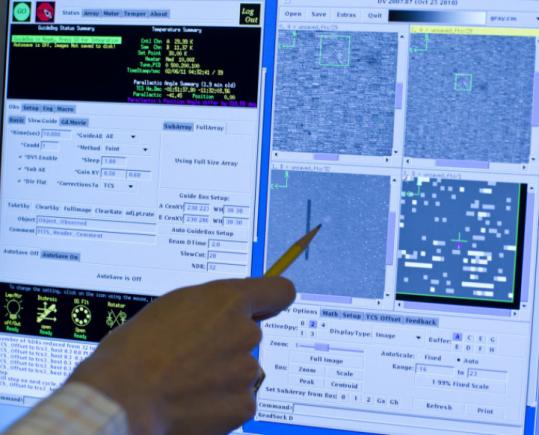
© Journal of Cosmology / Riccardo Guerrero / Richard B. HooverA photograph taken through a scanning electron microscope of a CI1 meteorite (right) is similar in size and overall structure to the giant bacterium Titanospirillum velox (left), an organism found here on planet Earth, a NASA scientist said.
We are not alone in the universe -- and alien life forms may have a lot more in common with life on Earth than we had previously thought.
That's the stunning conclusion one NASA scientist has come to, releasing his groundbreaking revelations in a new study in the
March edition of the Journal of Cosmology.
Dr. Richard B. Hoover, an astrobiologist with NASA's Marshall Space Flight Center, has traveled to remote areas in Antarctica, Siberia, and Alaska, amongst others, for over ten years now, collecting and studying meteorites. He gave FoxNews.com early access to the out-of-this-world research, published late Friday evening in the March edition of the
Journal of Cosmology. In it, Hoover describes the latest findings in his study of an extremely rare class of meteorites, called CI1 carbonaceous chondrites -- only nine such meteorites are known to exist on Earth.
Though it may be hard to swallow, Hoover is convinced that his findings reveal fossil evidence of bacterial life within such meteorites, the remains of living organisms from their parent bodies -- comets, moons and other astral bodies. By extension, the findings suggest we are not alone in the universe, he said.



Comment: For more information about this type of phenomenon see:
Dome of the Rock UFO and Kazakhstan Comet - Something Chaotic This Way Comes